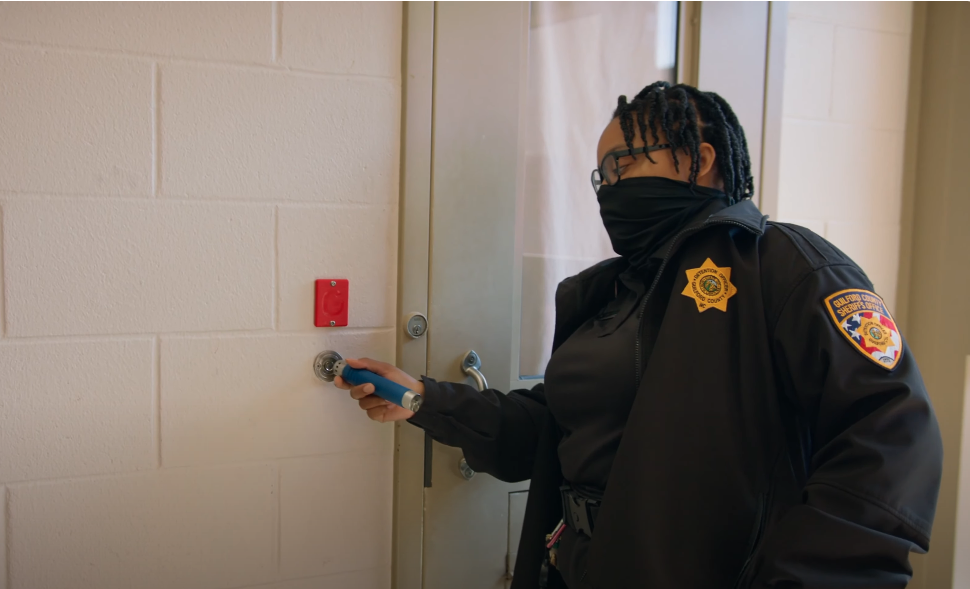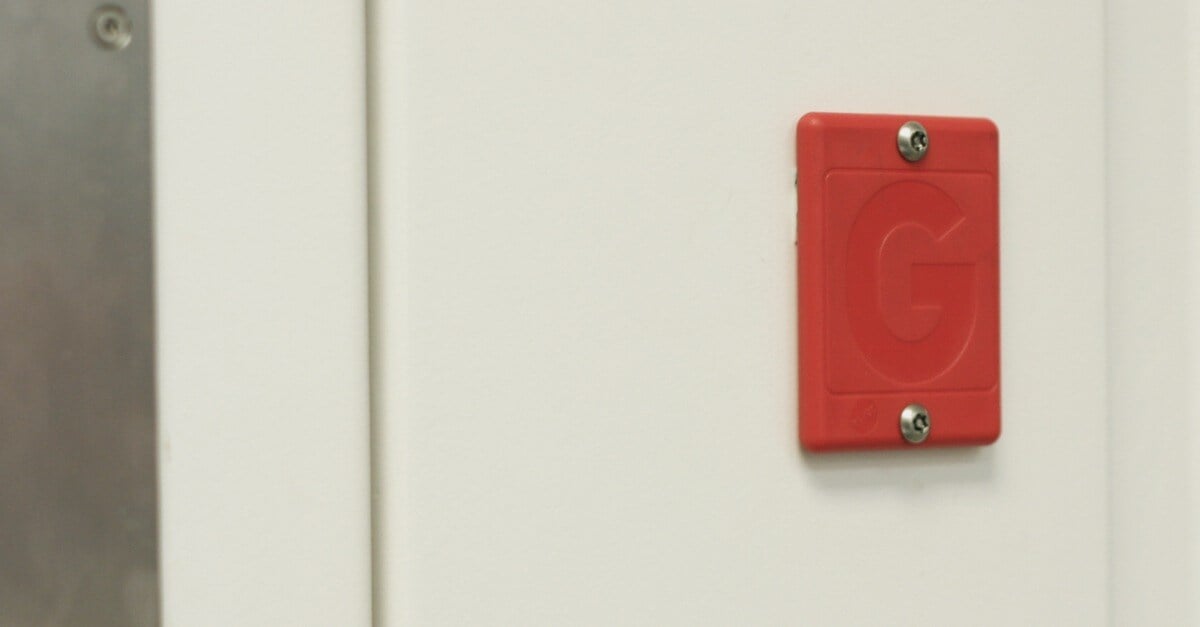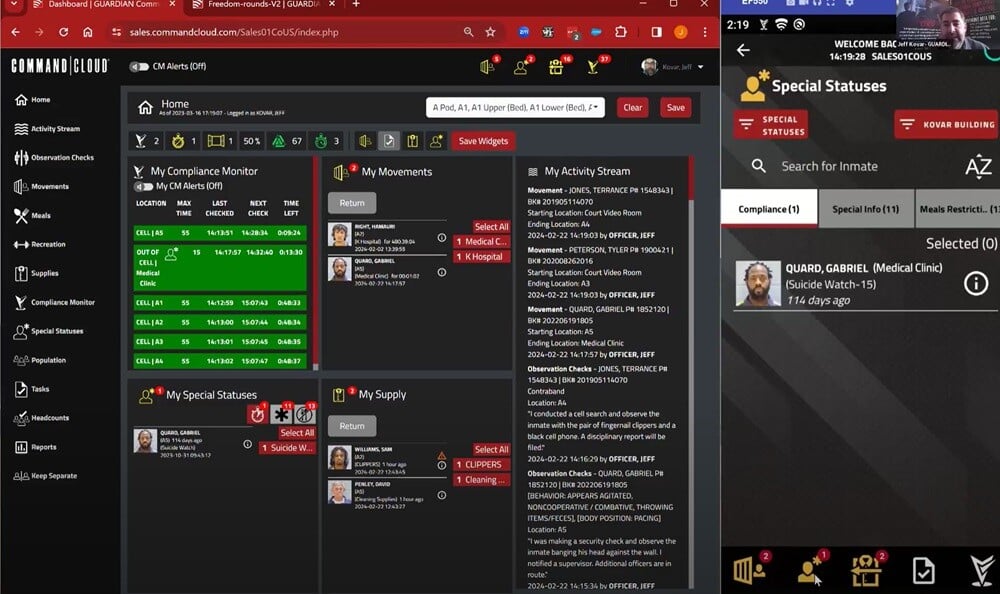The purpose of this blog is to break down the core differences between Guard1 vs. GUARDIAN RFID – specifically the PIPE vs. the SPARTAN. Much of this content comes directly from jails migrating from Guard1 to GUARDIAN RFID over the last 10 years.
It’s important to note that this content is based on carefully researched information that’s available online, news articles, user guides and brochures, and direct feedback from those who have used Guard1 from different facilities.
With that said, let’s dive into the topic: What are the main differences between the PIPE from Guard1 and the SPARTAN from GUARDIAN RFID?
What is the PIPE?
Before we define the PIPE, it’s important to know that it is a guard tour system.
What’s a guard tour system, you ask? It’s a technology solution designed to document the presence of security personnel and the activities they perform as they conduct their patrolling duties.
From the early 2000s through the 2010s, it was common to find a wide range of guard tour systems in jails, prisons, and juvenile detention facilities. Guard tour systems, primarily used for rounds tracking, are generally comprised of three parts:
-
Stations/checkpoints mounted throughout a facility
-
Proprietary handheld scanner or wand
-
Cradle-like device for placing the handheld scanner to upload completed checks
Some of the guard tour systems located in correctional facilities during this timeframe were Guard1’s data loggers, otherwise known as the PIPE. Sometimes referred to as a “wand,” the PIPE is an iButton-based, proprietary data collector made of corrosion-resistant #304 stainless steel alloy that reads iButtons, a small, stainless-steel device manufactured by Maxim Integrated.
The most common use cases for the PIPE in corrections have been related to security checks and cell checks. Guard1 iButtons are placed strategically at the ends of tiers in housing units and outside high-risk cells, among other areas, to demonstrate proof of presence during rounds. The PIPE “reads” the iButtons by placing the PIPE’s probe over an iButton. A short audible sound can be heard to let correctional officers know when a “read” is successful. When a security round is complete, the PIPE is placed in a docking station-like device called the IP Downloader to upload the electronic “reads” in batch, generally at the end of a shift.
What is the SPARTAN?
First and foremost, the SPARTAN is not a guard tour system.
The SPARTAN is a custom-manufactured, Android device from GUARDIAN RFID that features an integrated RFID/NFC reader to “read” or scan hardened RFID tags called “Hard Tags,” as well as RFID wristbands and RFID cards. It runs a mobile application called Mobile Command XR, which allows correctional officers to automate a number of responsibilities including security rounds (cell checks and security checks), headcounts, inmate movements, razor passes, and so much more.
Facilities that deploy the SPARTAN commonly have a Wi-Fi network so that data from the jail management system (JMS) can sync to the SPARTAN, as well as push data collected by the SPARTAN back to a Cloud server for reporting purposes.
Built to withstand any correctional environment and for staff who work never-ending shifts, the SPARTAN results in 8 feet of fall protection onto concrete and contains battery life that supports up to 14 hours of continuous use.
With a 13MP high-definition camera, it’s easy to capture digital videos and images at the point of responsibility for enhanced situational awareness and reduced liability. All digital assets including high-resolution recording, imaging, and audio are automatically and securely synced to the Cloud with unlimited data storage.
What do the PIPE and SPARTAN Share in Common?
Both the PIPE and SPARTAN have data collection capabilities although their form factors are vastly different; the PIPE resembles a wand and the SPARTAN resembles a beefed-up smartphone.
What do the two have in common?
-
For accountability purposes, the PIPE and SPARTAN both support login credentials to users. The PIPE uses an iButton while the SPARTAN can use either a username and password or an RFID fob.
-
The PIPE and SPARTAN are waterproof and shockproof.
-
Both store data, though the amount of storage is vastly different. The PIPE has much smaller data storage than the SPARTAN.
-
Both upload or “sync” data back to a reporting server, though the PIPE can only upload using an IP Downloader, a docking station device, while the SPARTAN generally uses Wi-Fi.
Physical Characteristics
PIPE

SPARTAN

Hardware & Warranty Features

Contact vs. Contactless
An iButton requires contact with an iButton data logger, such as the PIPE. The PIPE has a compact, coin-shaped profile that self-aligns with mating receptacles (the iButtton). The video below breaks down technical details about iButtons. Summarily, the data logger (PIPE) has to touch an iButton in order to collect data.
Hard Tags use short-range, high-frequency RFID tags that are read by the SPARTAN from a range of 1-3”. A Hard Tag is near-field-communication (NFC) compatible. The Hard Tag’s contactless use is one of the prevailing benefits of RFID beyond not requiring line of sight — unlike barcodes and QR codes that require line of sight scanning.
One of the most common complaints that users of Guard1 express is the lack of durability with iButtons. In fact, Guard1 has the following message on their website:
Lawsuit Brought by Inmates in California over Loud Noise Caused by Guard1
Inmates in the California Department of Corrections and Rehabilitation (CDCR) prison system recently filed suit in Sacramento federal court against CDCR’s use of the PIPE. According to a February 2020 article in the Sacramento Bee, the complaint details inmates’ assertion that the loud noise caused by the PIPE striking the iButtons on metal surfaces every 30 minutes was causing sleep deprivation.
The Sacramento Bee article states, “CDCR already has taken steps to reduce the amount of nighttime disturbance inmates face at another prison SHU. At Pelican Bay State Prison, the department agreed in 2015 to temporarily make Guard1 checks only once an hour between 10 p.m. and 6 a.m., and later made that policy permanent.”
In a 2015 article by The Guardian, inmates reported that custody officers were intentionally awakening each and every inmate in the secure housing unit (SHU) every 30 minutes through aggressive use of the Guard1 wand system.
Mounting Options
Guard1’s “PrisonProof” Metal Wall Mount Button mounts with two security screws. Hard Tags from GUARDIAN RFID also mount most commonly with two 1” security screws.

A Stainless Steel Button Holder from Guard1 (left) and a Hard Tag from GUARDIAN RFID (right) at the St. James Parish Sheriff’s Office’s jail in Convent, Louisiana. (Note: St. James Parish Sheriff’s Office migrated from Guard1 to GUARDIAN RFID in 2017.)
Image owned by GUARDIAN RFID
COST
Guard1 sells iButtons in several form factors, including their PrisonProof Metal Wall Mount Button for $39.95. Hard Tags from GUARDIAN RFID are $19.95. While the iButton mounts may be more affordable than Hard Tags, they are much less durable.
Incident Buttons and Inmate-Specific Logging
Beyond the use of iButtons for general security rounds and cell checks, Guard1 uses iButtons with the PIPE to log incidents. The incident button wallet holds a total of 12 iButtons that can be associated with a word or phrase, such as “In Cell,” or “Out of Cell.”
Some facilities, like the Laurel Co. Detention Center in London, Kentucky, mounted incident buttons outside of specific cells to log common observations.

Guard1 Incident buttons mounted outside of a cell in the Laurel Co. Detention Center. Laurel Co. Detention Center migrated from Guard1 to GUARDIAN RFID in 2020.
Image owned by GUARDIAN RFID
GUARDIAN RFID uses a patented feature called WordBlocks, which allows for an unlimited number of pre-programmed, digital words and phrases to be used to log inmate observations, interactions, services provided, movements, and more. WordBlocks are touchscreen supported in Mobile Command XR, the mobile application that runs on SPARTAN.

A correctional officer using WordBlocks on Mobile Command XR to log inmate movements.
Image owned by GUARDIAN RFID
One major difference between Guard1 and GUARDIAN RFID is the number of observations supported for incident logging. Guard1 supports a maximum of 12 incident buttons using its incident button wallet. GUARDIAN RFID supports an unlimited number of WordBlocks that can be digitally organized in any number of ways to help correctional officers work faster.
Correctional officers who have used Guard1 frequently discuss the finite number of logging options with the incident button wallet as well as having both hands occupied: one hand holding the wallet and the other hand holding the PIPE.
Inmate-Specific Logging
One of the biggest differences between Guard1 and GUARDIAN RFID is inmate-specific logging support.
Guard1’s PIPE captures location-specific data. You can use iButtons and the PIPE to know which officer has completed their security round, including when and where. In all cases where jails have migrated from Guard1 to GUARDIAN RFID, none had interfaced the PIPE with their jail management system (JMS). In fact, in all cases, jails that migrated from Guard1 to GUARDIAN RFID reported their deployment of Guard1 was standalone.
When you do not interface the PIPE with your JMS, it is unclear how the PIPE can support inmate-specific data capture and reporting. As a result, inmate-specific logging appears to be a capability that is challenging to achieve with Guard1.
The lack of inmate-specific logging support complicates matters for states like Texas. In 2017, Texas passed the Sandra Bland Act as the result of Sandra Bland, a Black Lives Matter activist, committing suicide in the Waller Co. Jail by hanging herself. The Sandra Bland Act requires, among other things, for all Texas jails to electronically monitor all face-to-face observations of named inmates.
Our blog, What is the Sandra Bland Act, and How Do We Maximize Our Compliance, details the genesis of the Sandra Bland Act, and the documentation and reporting requirements placed on Texas jails.
Major Lori Compton, CJM from the Kaufman Co. Sheriff’s Office in Kaufman, Texas, said that the only information that the PIPE gave to Jail Administration was that an officer was at a specific place (where the iButton was mounted) at a specific time. It did not record any information concerning what an inmate was doing during the check. Paper logs were still maintained to record specifics concerning the inmate’s activities or the housing unit’s activities as the PIPE couldn’t capture these specific details.
Chatham County Sheriff’s Office in Savannah, Georgia, expressed the same challenge of using the PIPE while maintaining a high dependence on paper logs for inmate-specific cell checks.

A corrections officer using a SPARTAN to log cell checks with Mobile Command XR software.
Image owned by GUARDIAN RFID
Useful Life and Warranty
Cleveland Co. Sheriff’s Office in Shelby, North Carolina said some of their iButtons had to be replaced every year or two due to the lack of iButton durability. Maintenance would re-mount iButtons if there were spares available, or they would need to order more from Guard1.
According to Guard1, hardware is under warrantee to be free from defects in materials and workmanship for a period of one year from the date of original purchase. Manufacturer agrees to repair or, at manufacturer’s option, replace equipment supplied by manufacturer which proves to be defective in materials or workmanship. This warranty is limited to defects arising under normal usage and does not cover malfunctions or failures resulting from the misuse, abuse, neglect, alteration, modification, or repairs by other than manufacturer’s authorized service facility.
Hard Tags from GUARDIAN RFID have a lifetime guarantee and have maintained a 99.98% success rate, with some of the oldest Hard Tags now ending their 19th year of continuous use.
Location Uses
Where are iButtons and Hard Tags commonly mounted? Hard Tags and iButtons can be used in many of the same locations. Neither requires an external power source, which makes both unintrusive to mount.
Common Location Uses
-
Ends of housing unit tiers
-
Dormitory-style housing units
-
Individual cells
-
Perimeters
-
Pipe chases
-
Fire extinguishers
-
Pods/housing unit entrances
-
Transport vehicles

A Hard Tag and a Guard1 iButton mount at the Buffalo Co. Jail in Kearney, Nebraska.
Image owned by GUARDIAN RFID
Summary
No matter which option you choose—an iButton from Guard1 or a Hard Tag from GUARDIAN RFID— both offer a significant upgrade from relying 100% on paper logs to track inmate activities. Both iButtons and Hard Tags can digitally log proof of presence during security rounds, which commonly meets most states’ jail inspection requirements – each using a different underlying technology.
The differences become far more apparent if you’re looking for a system that supports inmate-specific logging to achieve better defensibility outcomes. Suppose you’ve gone down the Guard1 path. In that case, you’re likely accustomed to using paper logs in addition to using iButtons and the PIPE, because Guard1 is very difficult to interface with jail management systems. You may also experience higher maintenance with iButtons needing to be replaced due to accidental or improper use of the PIPE repeatedly striking iButtons during security rounds.
Hard Tags with GUARDIAN RFID provide a comprehensive inmate management toolset that includes interfacing with jail management systems, backed by a lifetime guarantee. Their contactless use provides long-term protection against accidental or intentional abuse. When combined with the SPARTAN, the Android device running Mobile Command XR, there’s almost no situation that can’t be captured or automated.
Ultimately, the choice comes down to three things:
-
Do you need inmate-specific observation logging or just location-based logging?
-
How important is logging inmate activity to you? (Consider items such as med passes, meals, recreation, movements, and tracking out cell time.)
-
How important is integrating your jail management system with an inmate tracking system?
Selecting the right tool depends on the unique needs and priorities of your facility. By carefully evaluating these specific considerations, you can choose a system that supports your team’s goals and ensures compliance.



